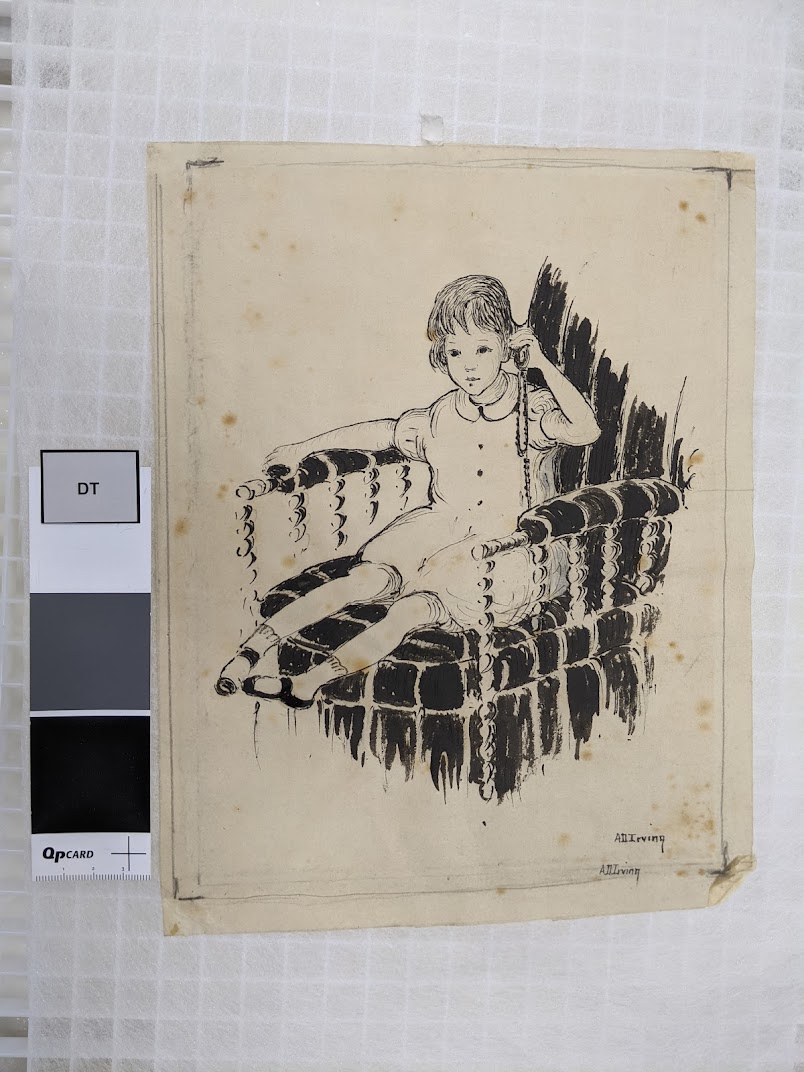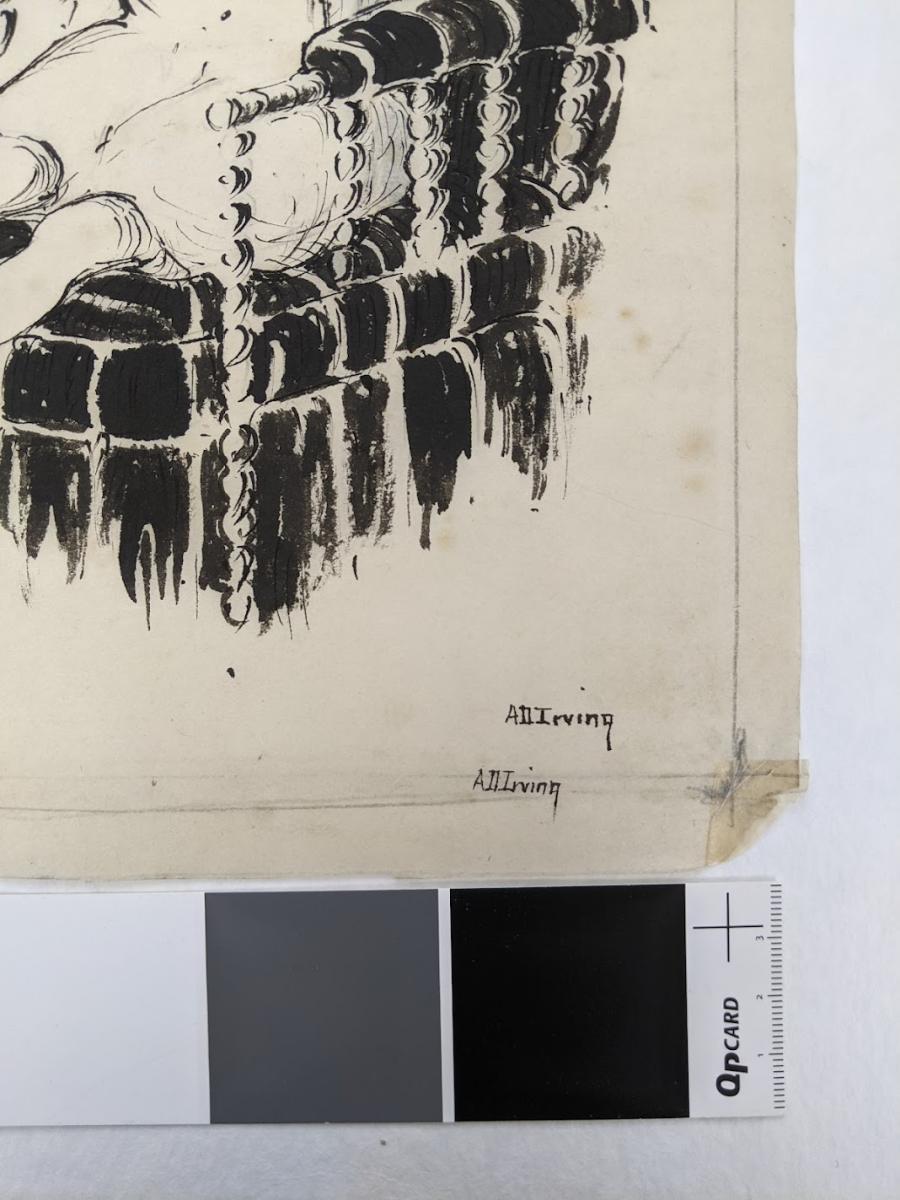In the field of conservation, paper, photographs, and textiles are treated separately by specialists who have trained in the preservation of each of these materials. However, items on paper and many cloth articles have something in common: being made from plant material (cellulose). The term cellulosic is often used to categorize them. Having a common derivation gives certain paper and cloth similar aging characteristics and potential for cross-disciplinary treatment methods. For example, papers made of cotton and linen, as well as woven cloth, may both undergo washing with water to remove discoloration products and stains. Of course, textiles may be made with protein fibers like silk and wool, and paper may have clay or plastic layers. Close inspection and materials knowledge come into play whenever stain removal with water is indicated.
Washing of historic textiles is a much more involved process than tossing the material in a washing machine. Weaknesses in older garments or decorative textiles make them vulnerable to the truly rough and tumble treatment of a churning agitator. The weight of water saturating the material means it must be handled with a flexible, water penetrable support and hand washed in an oversized basin. Another note on historic textiles; using highly fragranced and dye-containing laundry aisle detergents and stain removers is not recommended.
Stain removal from paper is an even more delicate process, and wet papers must be handled with extreme care. First, the paper may not withstand wet treatment at all. It may be too weak if composed of acidic and short fibered wood pulp instead of cotton, linen, or bast fibers. Using different additives to alter the pH of the water bath can do wonders for removing stains. Solutions must be spot-tested textile dyes and printing inks to prevent bleeding and color loss.
Chemical oxidizing bleaches (think Clorox) are popular for laundry sanitizing but are avoided for use on historical items. Some chlorine-based formulations were used to whiten papers in the past, but the action could be temporary and came at the expense of paper strength.


Other bleaches that work via chemical reduction can be successful, as in the treatment of this ink drawing. The paper and ink were tested extensively first, with small drops of water applied, blotted, and inspected for any ink transfer. What was notable was the amount of paper yellowing components transferred to the blotter. This was what led to the choice to wash the entire drawing. Spunbonded polyester was used to support the paper during and after immersion. Gaps between the fibers allow water through, and the material strength is unaffected by water. After drying, the artwork still had local stains, although reduced. The stains were treated with local brush-applied reducing bleach, then rinsed on top of a blotter to draw out any chemical residues. The bleach was not used over the ink areas since its high pH could cause ink loss. These stains did not require the application of Shout or other laundry stain removers!
Featured Treatment: Hagley Museum Accession 2021.6. Ink portrait of Elaine Irving Woodriff II by Anna Duer Irving, approximately 1940
Laura Wahl is the Library Conservator at Hagley Museum and Library.
